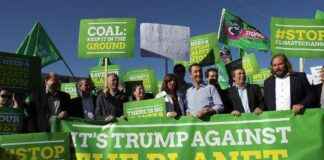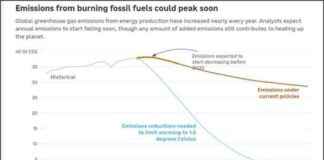Proposed EPA Plan Threatens to Slash Staffing to 1970 Levels
In a startling development, President Donald Trump revealed plans to drastically reduce the workforce of the U.S. Environmental Protection Agency (EPA) by a staggering 65 percent. This proposed move, discussed with EPA Administrator Lee Zeldin, would bring the agency’s staffing level down to a mere 5,300 employees, a figure reminiscent of the workforce present during EPA’s inaugural year in 1970.
The President, speaking at his first cabinet meeting, expressed his intention to expedite this downsizing process, aiming for quicker decision-making within the agency. Trump highlighted his belief that many individuals within the EPA were ineffective, referring to them as obstructionists and non-existent entities. This revelation comes as part of a broader strategy laid out by the administration to enact massive layoffs across the federal government.
Former EPA staff members voiced their outrage at the proposed reduction, warning that such severe cutbacks would leave the already understaffed agency ill-prepared to tackle the escalating environmental challenges posed by climate change. Michelle Roos, Executive Director of the Environmental Protection Network, a group of former agency employees, condemned the plan, asserting that it would create opportunities for corporate polluters to harm the environment freely.
Outrage and Concern Among Former EPA Staff
Roos further emphasized that a 65 percent reduction in staff would severely cripple the agency, taking EPA back to its lowest staffing levels since its inception in 1970. She underscored the critical role of the EPA in safeguarding public health and environmental well-being, a mission that would be jeopardized by such drastic downsizing. The environmental challenges faced today, including pollution-related health risks, underscore the necessity of a robust EPA workforce.
The proposed plan to slash EPA staffing by 65 percent represents a dramatic escalation from the 8 percent reduction that occurred early in the first Trump administration. While previous attempts to curtail EPA’s workforce faced resistance from Congress, the current political landscape, with Republicans in control of both chambers, may pave the way for more significant cutbacks. Despite the historical reluctance of legislators to enact deep budget cuts, the current administration’s focus on reducing the size of government indicates a potential shift in policy.
Political Implications and Controversy
The memo issued by White House budget director Russell Vought, calling for reorganization plans across federal agencies, further underscores the administration’s commitment to streamlining government operations. Vought’s message aligns with the administration’s broader goal of reducing government spending and eliminating inefficiencies.
The proposed EPA staffing cuts have drawn strong criticism from Senator Sheldon Whitehouse, who decried the administration’s apparent disregard for environmental protection. Whitehouse emphasized the need for collaborative efforts within the agency to address pressing environmental issues effectively. The deep cuts proposed at EPA have raised concerns about the agency’s ability to fulfill its vital mission in the face of mounting environmental challenges.
As the debate over EPA staffing levels intensifies, the fate of the agency hangs in the balance. The potential repercussions of such significant cutbacks could have far-reaching consequences for environmental protection efforts nationwide. The need for a robust and well-equipped EPA remains paramount in safeguarding public health and environmental integrity.
The proposal to slash EPA staffing levels to 1970 levels has ignited a firestorm of controversy and debate, underscoring the critical role of the agency in environmental protection. As stakeholders on all sides weigh in on the potential impact of these cuts, the future of the EPA hangs in the balance. The decisions made in the coming months will shape the trajectory of environmental policy in the United States for years to come.














